 An Exchange with John G. Morris
An Exchange with John G. Morris
On July 4, I received the following email from former LIFE Picture Editor John G. Morris:
Dear A. D.:
I have just returned from ten days in NY and Toronto, where I heard that you and Ross Baughman were attacking me. Thinking of you as both a friend and an intelligent critic, I thought little of it, but this afternoon I printed out all 12 pieces you posted about me, and am shocked. You didn’t even have the courtesy to check with me or ask me to reply. Nor do you, as far as I have seen so far, refer to my book Get the Picture, which devotes most of the first chapter to D-Day. You even have the nerve to say that Capa didn’t do his job.
I don’t think I need this at my advanced age (97).
John
•
I replied that same day, as follows:
Dear John:
I’ve received your email complaining about the recent series of posts at my blog, Photocritic International, relating to Robert Capa’s actions and output on Omaha Beach on D-Day, the subsequent fate of his negatives, and related matters.
First, as you and I have never spent any private or personal time together, but merely crossed paths briefly in professional situations, I’m not sure we qualify as friends; we’re barely acquainted. As for my intelligence as a critic, I leave that to others to determine, as always.
I gather that you haven’t actually read most of those posts you printed out. You write, “Nor do you, as far as I have seen so far, refer to my book Get the Picture, which devotes most of the first chapter to D-Day.” In fact, your book Get the Picture is cited in many of the posts. Links to online versions of passages from Get the Picture — and to various interviews with and profiles of you, from print and video sources, in which you reiterate the version of Capa’s D-Day and yours that appears in that book — appear throughout the series, as do assorted quotes from you.
The very first of my series of posts on this subject contains links to no less than 10 of your various recountings of your version, starting with the passages from Get the Picture in 1998 and moving forward chronologically to the latest, from 2014. Readers of these posts have frequent and ready access to your version of those events; pretending otherwise does not serve you well.
You write, “You didn’t even have the courtesy to check with me or ask me to reply.” But Ross Baughman, who wrote the posts that kicked off this inquiry, sent you a Facebook message in this regard in late May, which you ignored.
Moreover, you have told the same story, virtually word for word, for 70 years. Most recently, at the end of your June 24 ICP dialogue with Robert Pledge (which I viewed on streaming video), Stephen Perloff, the respected editor of The Photo Review, a long-running U.S. photo journal, asked you a very specific question: “Capa’s caption notes on his four rolls of 35mm film sent to you in London when he returned from Normandy indicate that three of those rolls he made aboard the U.S.S. Chase the night before the landing. He therefore exposed only a single roll on Omaha Beach, correct?” (I’m quoting from memory.) That’s a simple question, with a simple yes-or-no answer. Instead of responding, you went into your standard account of waiting anxiously for the film, the looming deadline, the “darkroom lad,” etc.
It seems clear, therefore, that you intend to stick to the story you’ve told all these years, no matter how many holes anyone pokes in it. But an invitation to reply is always implicit in any challenge to a narrative. So of course you’re welcome to respond, at whatever length you choose, in a Guest Post at my blog.
If you do so, however, I hope it’s clear that mere repetition of the same tired and increasingly dubious narrative won’t suffice. You can’t simply copy and paste in the set piece from Get the Picture. Precise questions require precise answers here.
There followed a list of questions intended to provoke a response (if possible), and also to clarify some of the murky and/or contested aspects of the standard story. At the end of those queries I wrote,
These represent the types of pointed questions that you’d get asked by a serious interviewer who’d done his research — not someone kissing up to you, like Bob Pledge at the ICP, and not someone invested in feeding the Capa legend, like his biographer [Richard Whelan] or the curator of his archive [Cynthia Young]. If you’re prepared to answer those questions, and a few more like them, I’ll make as much space available at my blog as you care to use. If not, that decision will speak for itself.
I’m sure you don’t need this at 97. I don’t enjoy prodding someone your age — but you continue to repeat and reinforce a narrative that is, at least in part, a pack of lies, so I have little choice. If it’s any consolation, had these questions occurred to me when I first read Slightly Out of Focus back in the late ’60s, I’d have asked them then, back in your middle years and my salad days.
Ironically, had that TIME video with its fictitious “ruined” negatives and your voiceover and imprimatur not come out on this past May 29, these questions would never have arisen. So you have only yourself to blame for not forestalling them by objecting to the inclusion of those forgeries.
•
On July 9, I received this email:
Dear A. D.:
Response coming soon.
John
A week thereafter, I received a copy of D-Day: Robert Capa, published on the 60th anniversary of the battle in 2004 by Edition Point de Vues, a French house, in both French and English.
I’d recently become aware of this book, a copy of which Morris mailed to me from Paris, but hadn’t had a chance to see it. It’s a handsome little production, which includes the following:
- The D-Day chapter of Morris’s 1998 memoir, Get the Picture;
- Thumbnails of “Beachheads of Normandy,” LIFE‘s June 19, 1944 D-Day layout including 8 Capa images, five of them from Omaha Beach;
- full-page bleeds of the remaining 10 of the “magnificent eleven”;
- A Capa bio by two French writers, Benoît Eliot and Stéphane Rioland;
- “D-Day 6:00 a.m.,” by the same authors, which we might call a Capa’s-eye account since it takes his 1947 memoir Slightly Out of Focus as gospel, merely reiterating in the third person Capa’s version of his time before, during, and after the landing, quoting from it now and then;
- a bio of Morris, a bibliography, and some other back matter.
In short, absolutely nothing new there. Notable by their absence: Capa’s caption notes, which demonstrate clearly that he exposed only one roll of 35mm film on Omaha Beach, and the alleged “scrawled note [from Capa that] said that the action was all in the 35-millimeter, that things had been very rough,” etc. Excluding these, in a volume that claims to gather all the material relevant to Capa’s D-Day images, strikes me as an extremely odd editorial decision.
I emailed Morris to thank him for the book, adding that “I assume this isn’t what you meant when I offered you a Guest Post and you indicated that you’d ‘respond soon.'”
I did glean two useful bits of information from Morris’s notes:
- Four sets of prints got made of the Capa images (and images by others) sent on the morning of June 8 to LIFE: one for the censors, one for the Pentagon in Washington, D.C., one for LIFE‘s head office in New York, and one for LIFE‘s London office. All four had to get stamped “PASSED FOR PUBLICATION.” (However, Capa’s images from D-Day began to appear in print on June 8, well before their publication in LIFE. For a detailed analysis of the distribution of Capa’s images, see “Les premières publications des photos de Robert Capa sur le débarquement en Normandie” by Patrick Peccatte, published at his blog Déjà vu on August 16, 2013. In French only, as is an earlier research effort of Peccatte’s, “Revoir Capa,” from April 24, 2010.)
-
The set sent to New York went accompanied by its negatives. All negatives presented to the censor got cut from their strips into single frames, most likely tucked into glassine envelopes for protection. Presumably this allowed the censor to return unacceptable individual prints and their negatives to the erstwhile sender, who wouldn’t have to cut them off the strip on the spot. This explains why all the “magnificent eleven” existed as single negatives. It also explains how easily they could have become damaged along their edges, and how two of them got lost somewhere along the line.
Then, on July 22, I received a substantial response from Morris to my set of questions. Since Morris numbered his answers according to my questions, I’ve structured this into an interview-style Q&A, which I’ll present in the form of three Guest Posts over the next few days.
•
(For an index of links to all posts in this series, click here.)
•
This post supported by a donation from Prof. Andrew Szegedy-Maszak, Dept. of Classical Studies, Wesleyan University.


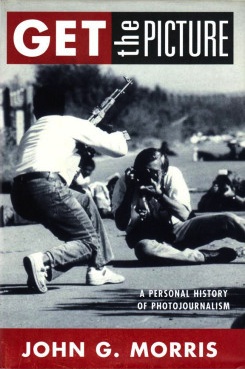
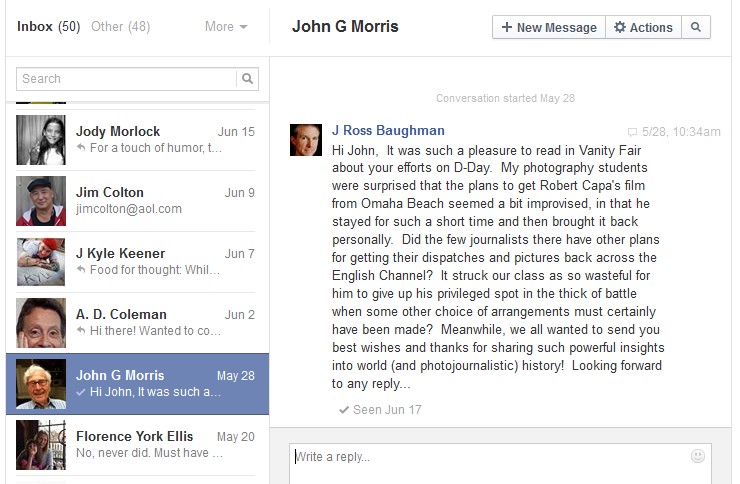
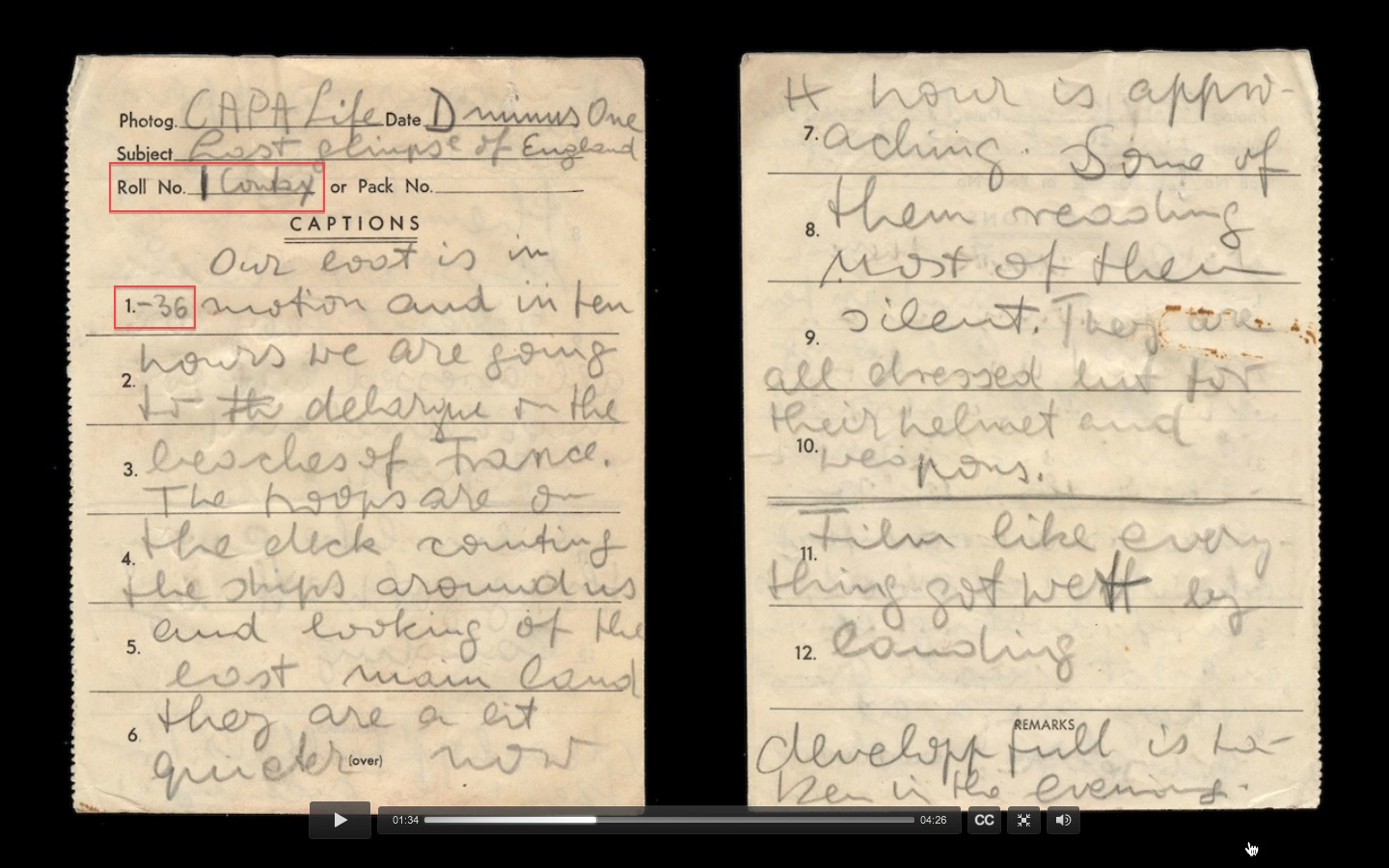
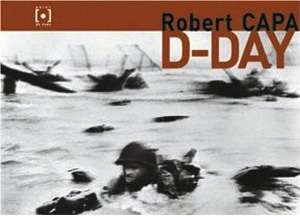
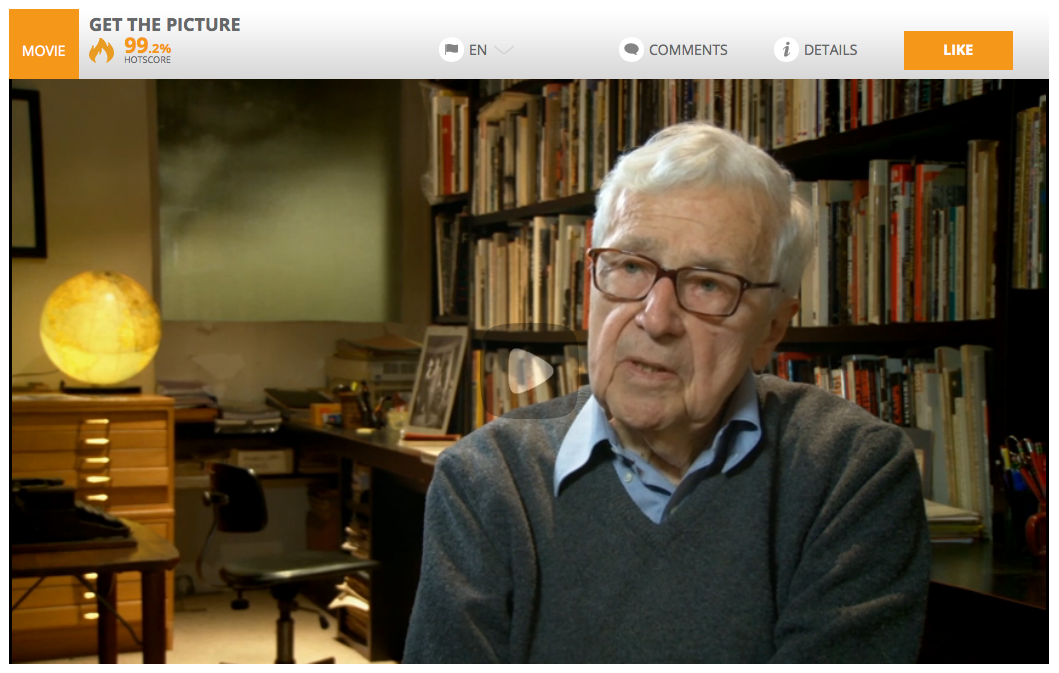




I like your cool-headed yet provocative response, and look forward to his confession. It will be annoying if he sticks to his story, and when pressed to explain inconsistencies plays the age card. In that streaming video interview (more a monologue), he had no trouble recalling minute details and names in his past.
Rules of engagement at this blog require commenters to use their real names and real email addresses; it’s a no-troll zone. I’ve decided to make an exception for someone who identified him/herself only as “Reader,” and used a fake email address (email@nospam.com), because he or she asked a reasonable question:
[From the email to John Morris, above] “You write, ‘You didn’t even have the courtesy to check with me or ask me to reply.’ But Ross Baughman, who wrote the posts that kicked off this inquiry, sent you a Facebook message in this regard in late May, which you ignored.”
– Facebook? How often do you think a 97 year old man is going to check his Facebook account?
If “Reader” had taken the trouble to check Morris’s Facebook page, he or she would have discovered that it’s quite active for the page of a now-98-year-old. Morris posts there every week or so, sometimes more frequently. Not some clueless geezer who doesn’t get the intertubes, in other words.
FB also sends notifications when someone posts a message to your page. One way or another, by the time Morris sent me that July 4 email, he’d had five weeks to answer the query from Baughman (whom he knows well and presumably respects, I should add). He has responded with relative promptness to emails I’ve sent him.
Beyond that, despite Morris’s aggrieved tone it’s not standard practice for investigative journalists to notify the subjects of their research about it, nor mandatory to solicit their replies.